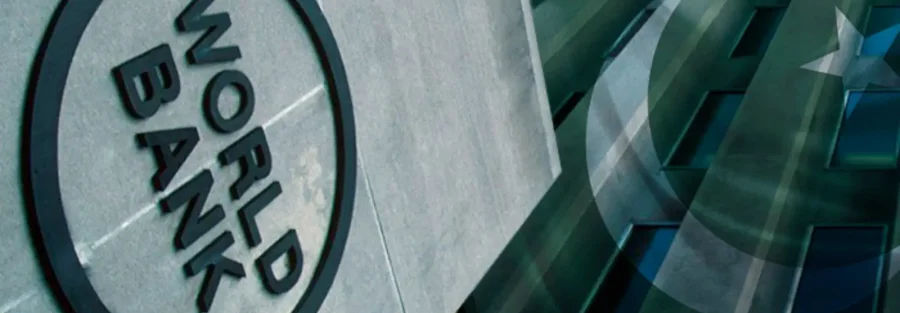A Lifeline or a Launchpad?
Pakistan just secured a US $20 billion, 10-year partnership with the World Bank – one of the largest long-term commitments in its history. Announced in September 2025, the package isn’t a bailout; it’s a blueprint for transformation.
After years of recurring fiscal crises, climate shocks, and energy shortfalls, Pakistan has entered a new phase – one focused not on short-term survival, but on structural reform. And the world is watching to see if this time, the country can turn financial assistance into sustainable progress.
The Deal at a Glance
The World Bank’s Country Partnership Framework (CPF 2025–2035) outlines funding across three priorities:
- Fiscal stability and governance – strengthening institutions, transparency, and tax administration.
- Human capital and inclusion – investing in education, healthcare, and social safety nets.
- Climate resilience and energy reform – supporting renewable transition and water management.
Unlike past aid tranches, this partnership spans a full decade. It aims to outlast political cycles and anchor consistency in economic planning. According to the World Bank, “long-term stability cannot be achieved through emergency financing; it requires predictable investment in people and systems.”
From Bailouts to Blueprints
For decades, Pakistan’s economic story has swung between crisis and rescue – IMF programs, balance-of-payment shortfalls, and short-lived growth spurts. What makes this agreement different is its shift from reactive financing to proactive development.
By tying funds to measurable reforms in governance, taxation, and infrastructure, the World Bank is pushing for accountability. And by stretching the timeline to ten years, it’s betting that institutional change can finally outpace political change.
Still, execution will be everything. As one Karachi-based economist put it, “The money will only matter if it outlives our politics.”
Why It Matters Beyond Pakistan
The deal’s implications go far beyond South Asia. For global investors and development partners, Pakistan is a test case: Can a large emerging economy pivot from crisis management to sustainable growth with the right framework?
If successful, this could redefine how multilateral institutions engage with developing countries – replacing short rescue loans with long-term co-ownership of reform agendas.
It also signals renewed international confidence in Pakistan’s potential as a market of 240 million people, a strategic trade corridor between China, Central Asia, and the Middle East, and a critical player in global climate adaptation.
Climate at the Core
Nearly 40 % of the partnership’s funding is earmarked for climate and environmental projects – reflecting Pakistan’s vulnerability after the 2022 floods that submerged a third of the country.
Investments will focus on renewable energy, urban drainage systems, and agriculture adaptation to protect livelihoods. The World Bank has framed Pakistan as “a frontline state in the global climate fight,” and this package as a model for climate-linked development financing.
That focus isn’t just moral – it’s economic. The Asian Development Bank estimates that climate disasters cost Pakistan around 2 % of GDP annually. Building resilience isn’t a side project; it’s a survival strategy.
Reform or Repeat?
Skeptics warn that without tough reforms, the $20 billion could vanish into the same inefficiencies that derailed past programs. Pakistan still struggles with low tax collection (below 10 % of GDP), loss-making state enterprises, and dependence on imports for energy.
But there are signs of change. Digital tax tracking, new sovereign wealth management laws, and renewable-energy PPPs are gaining traction. If these align with the World Bank’s conditional roadmap, Pakistan could unlock private-sector confidence that multiplies the initial investment several times over.
A Signal to the Markets
The partnership arrives at a moment of cautious optimism. Pakistan’s stock market has rebounded 15 % year-to-date, and remittances are climbing again after a two-year slump. The Pakistan Business Council called the World Bank deal “a stabilising anchor in turbulent global conditions.”
Foreign investors are taking note – not just of the money, but of the message: Pakistan wants predictability, not firefighting. For multinationals considering energy, agriculture, or logistics investments, that matters more than short-term incentives.
The Road to 2035
By 2035, Pakistan’s challenge will be measured not by how much funding it received, but by what it built: modern infrastructure, a greener grid, efficient governance, and empowered citizens.
If executed well, this could be the moment Pakistan finally breaks the cycle – replacing crisis headlines with growth stories, and re-emerging as a bridge between South Asia and the Middle East’s economic future.
But success will demand discipline, transparency, and political maturity – the kind that converts partnerships into permanence.
Conclusion
The $20 billion World Bank partnership isn’t a quick fix. It’s a decade-long test of whether Pakistan can align ambition with execution.
For a country often defined by volatility, this deal offers something rare: time – to plan, to reform, and to rebuild trust at home and abroad.
If Pakistan uses that time wisely, this won’t just be another aid story.
It will be a turning point – one that redefines what long-term growth from within truly looks like.





